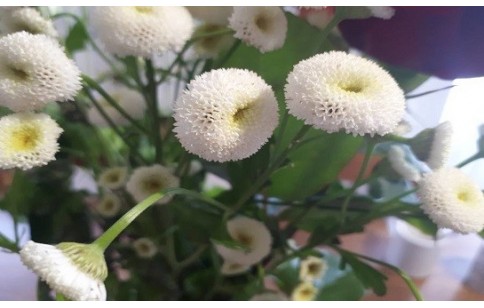- Code : #1102 S 20 mg
- Formula : C₁₅H₁₀O₅
- CAS : 520-36-5
Tanacetum parthenium
Tanacetum parthenium, “Feverfew” in English and “Grande camomille” in French, belongs to the Asteraceae botanical family.
Native from South-East Europe to Asia, it grows in mountain scrub, rocky slopes, waste places and gardens. It is a herb, growing to 0.70 m in a bush.
Strongly aromatic it is used to make tea. Noted by Dioscorides in the 1st Century AD, it was used to treat many different ailments (migraine, fever, rheumatism, menstrual and digestive problems, psoriasis…). Today, it is mostly used to prevent headaches, and research has validated its analgesic, anti-inflammatory and antipyretic activities.
Its most important biologically active principles are the sesquiterpene lactones, mostly parthenolide; several flavonoids and coumarins. Its essential oil contains mostly camphor, camphene, p-cymene and bornyl acetate.

- Code : #4991 S 50 mg
- Formula : C₁₆H₁₈O₉
- CAS : 327-97-9
- Code : #4946 S 10 mg
- Formula : C₂₅H₂₄O₁₂
- CAS : 2450-53-5
- Code : #3805 20 mg
- Formula : C₁₅H₂₀O₃
- CAS : 20554-84-1
- Code : #1419 S 10 mg
- Formula : C₂₂H₂₂O₁₀
- CAS : 4291-60-5






